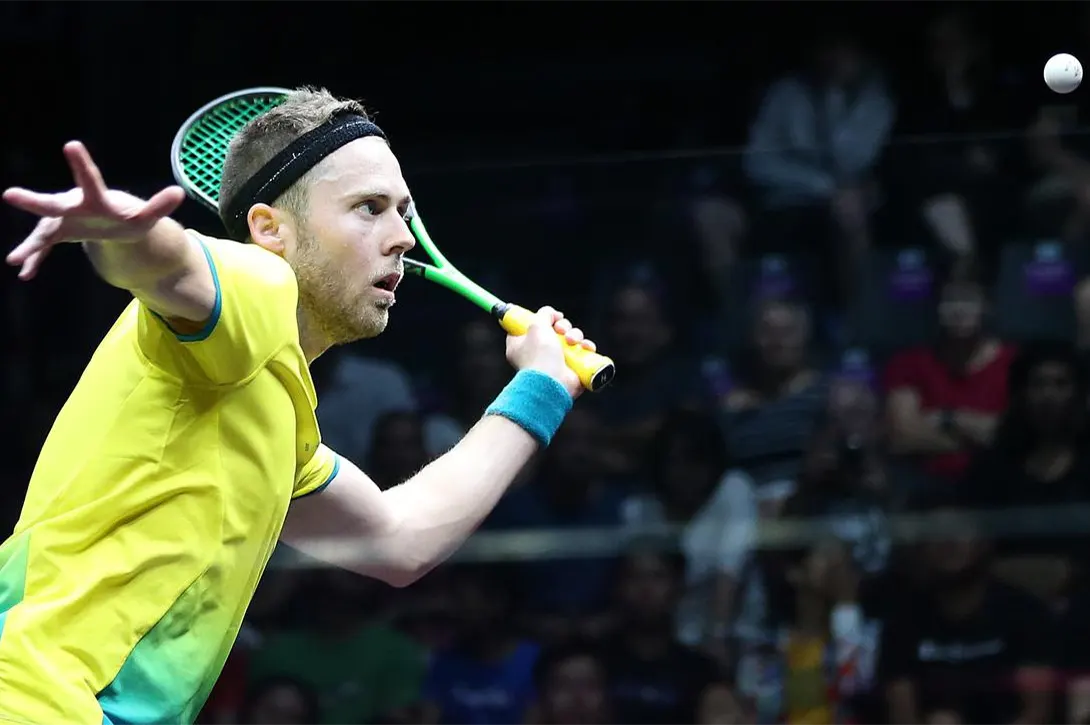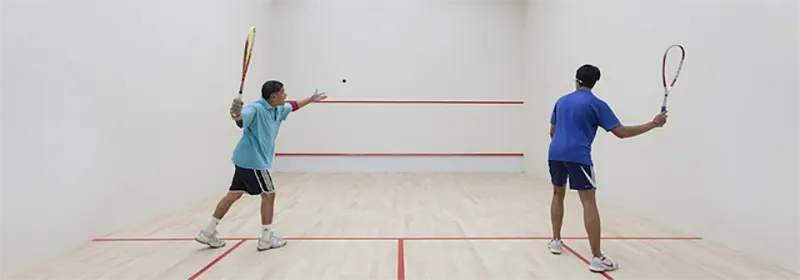Practice Your Serve And Service Return
The better you get, the less important the serve is, but the more important the return. At lower levels, both are incredibly important and often neglected.
18 June 2022 / 3-Min Read / Translate
As I said in the introduction, the better you get, the less important your serve becomes. The chances of hitting a winning serve get smaller and smaller, the better you get because your ability to volley or make split-second decisions improves. That’s why you don’t see many, if any, winning serves. Professionals, are simply trying to stop their opponent from having an advantage. It’s also why every now and again, a pro squash player hits a weak serve – they have got into the wrong frame of mind.

Notice his focus on the ball
At lower levels, especially at beginner and improver levels, the serve is a HUGE weapon because returning a good serve is quite hard for new players. The variety of successful serves is also important as new players find it hard to adapt to different serves. Move up the level in skill and this ability to adapt is much better trained.
So Let’s Practice Those Serves!
The first thing you can do is agree to play a 2-serve-per-point game with your partner. This will allow you to try for a really high lob-type serve and if it goes out, it doesn’t matter because you have another one. Another option is to have 5 extra serves per game. That adds a new dimension to the idea, because you have to chose when to attempt a great serve.

Not the best footwork from the server, but I like the returner's position
The next thing you can do is actually practice serves. Place a target on the wall as high up as you can reach, a long balloon is my favourite but a folded piece of A4 paper stuck on the masking/painters tape is good too. Then using a red dot, hit 10 serves, remembering to move to the T afterwards. Alternate this with some other hitting if you are doing a solo drill. Alternatively you can agree with your playing partner to practice serves at the end of each game.
Service Returns
Start 2 metres away from the front wall, simply hit some volleys back to yourself. Keep the swing short (see the first video below for more details). As you get better, move further away from the front wall. In fact, see if you can move all the way to very near the back wall. Make contact as high as you can and aim high on the front wall.
Doing the figure of eight (see the second video below) with an alternate straight shot is a great way to get better at return of serves. Ideally, you should practice return of serves with a partner. Both players stand at the back of the court, player 1 hits a high crosscourt shot aiming for the ball to hit the sidewall behind the service box. Player 2 then volleys a straight deep drive, followed by a crosscourt volley to player 1, who then hits a straight deep volley, and so on. You can even turn this into a game and score it.
Final Thoughts
For beginners, improvers, club and recreational players improving your serve and service return is one of the best investments of time. Practice them today!